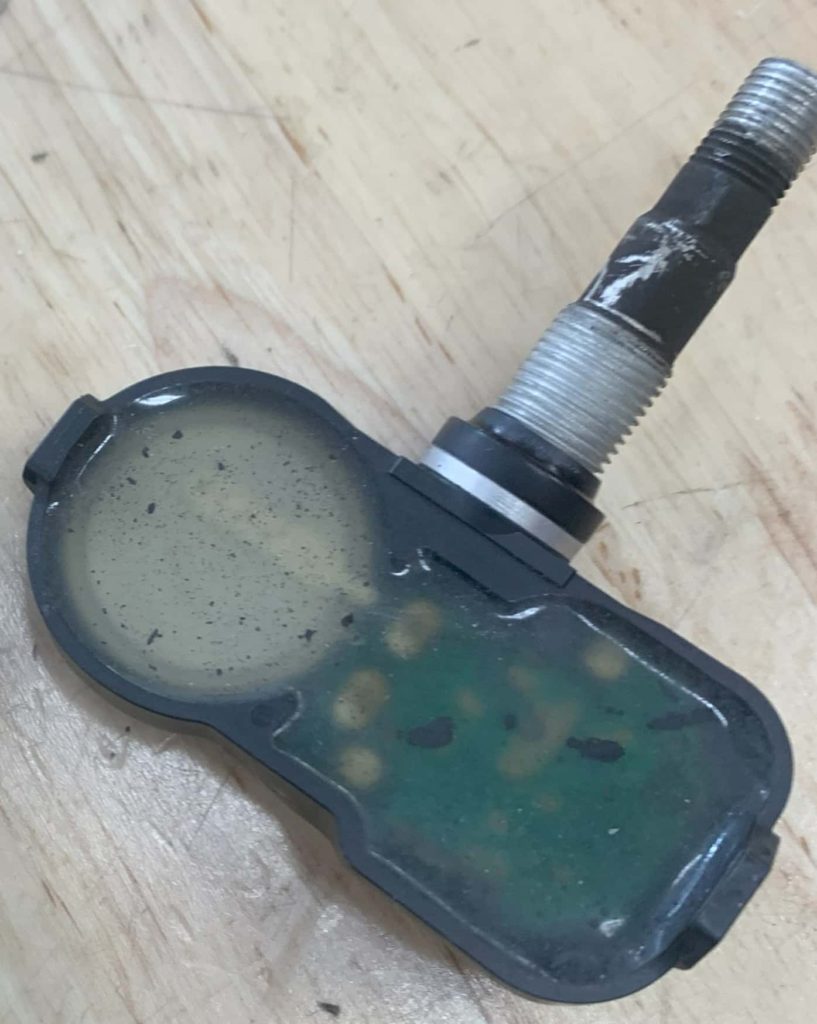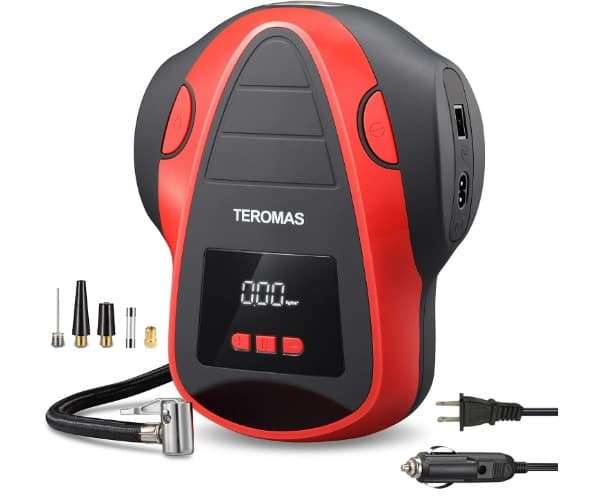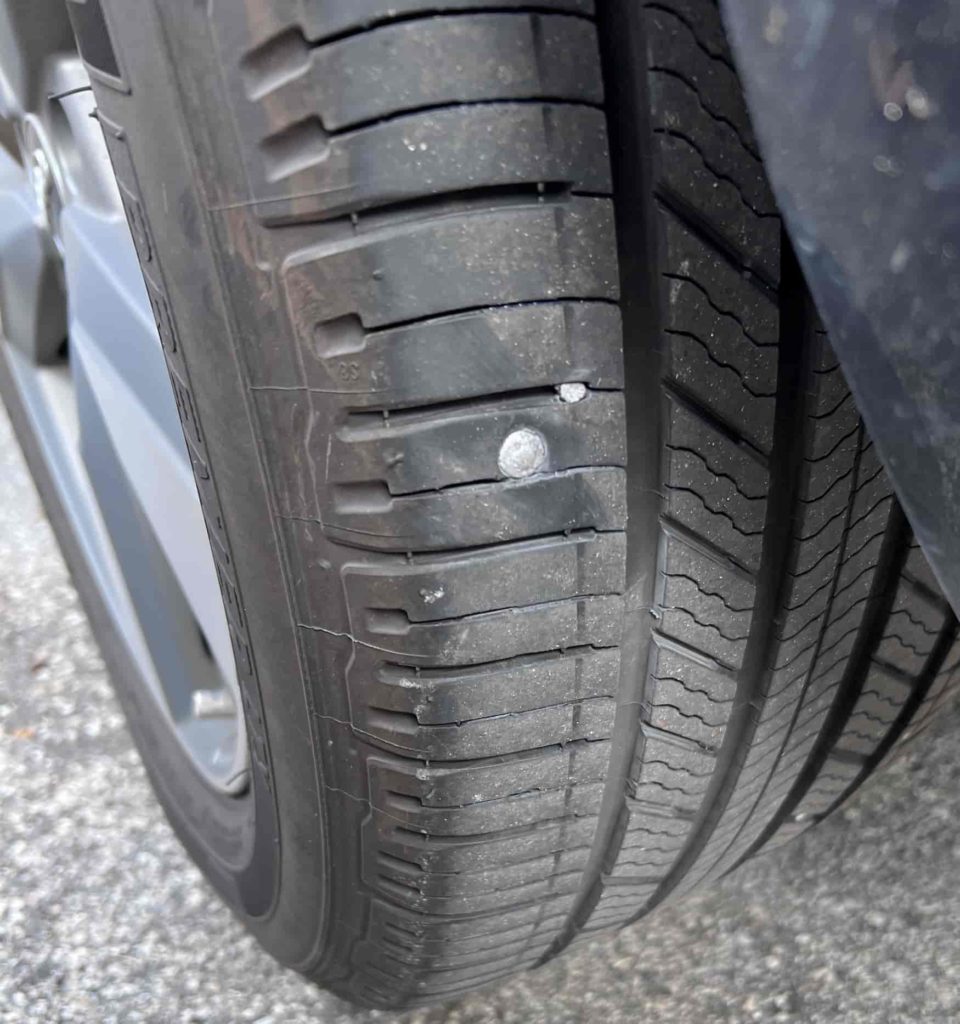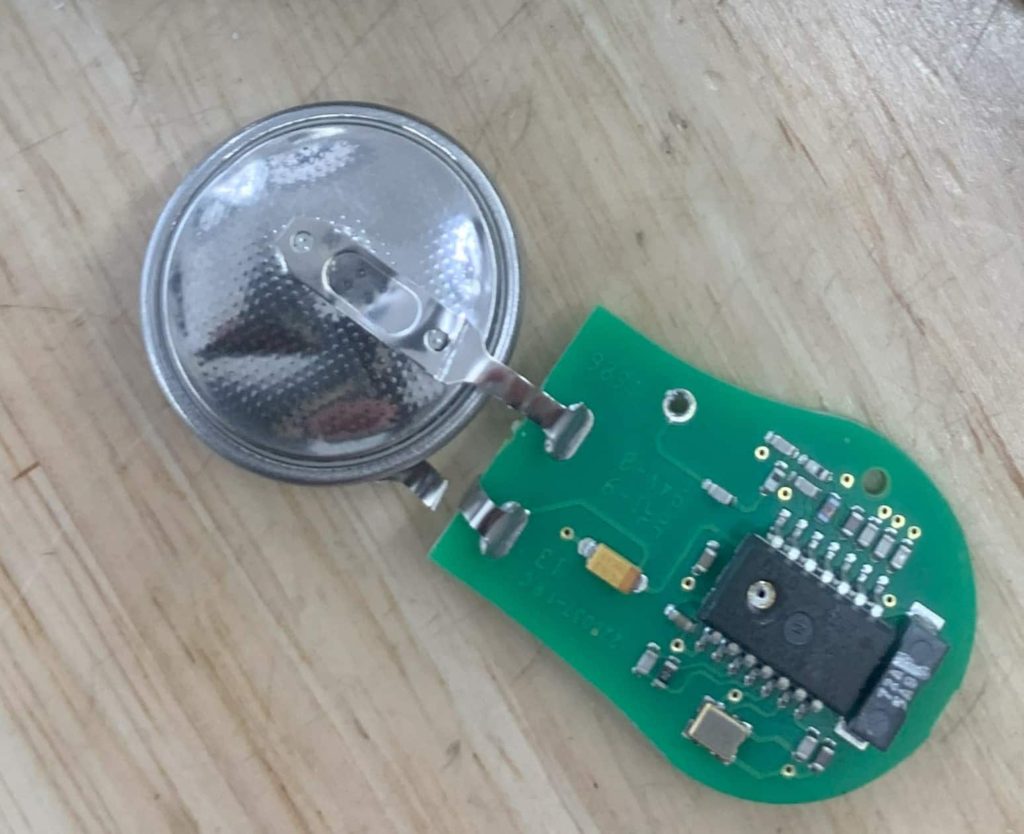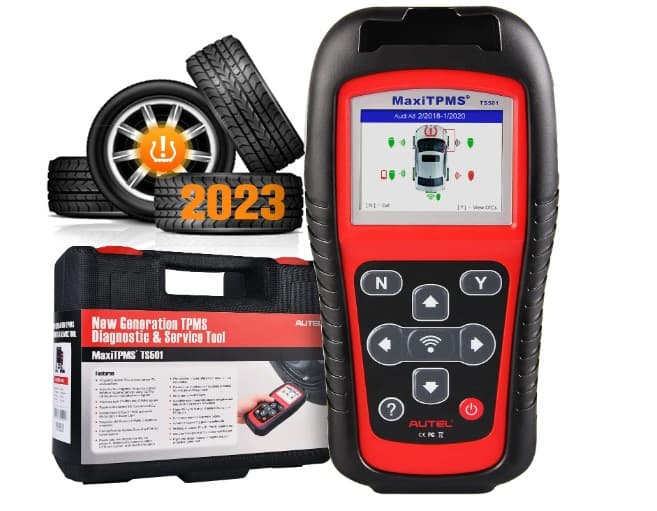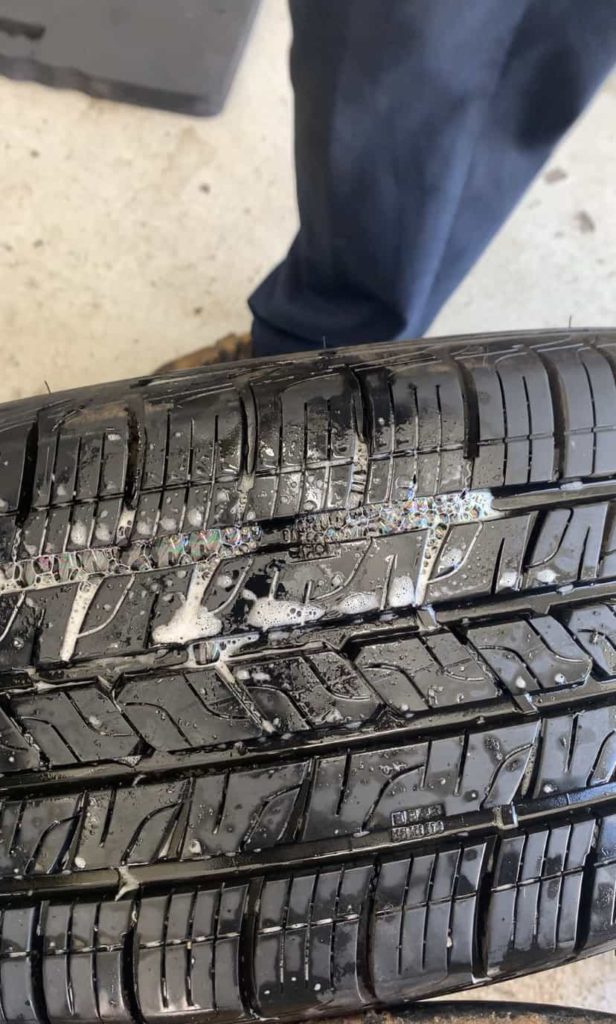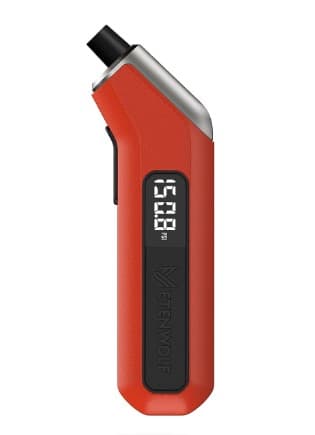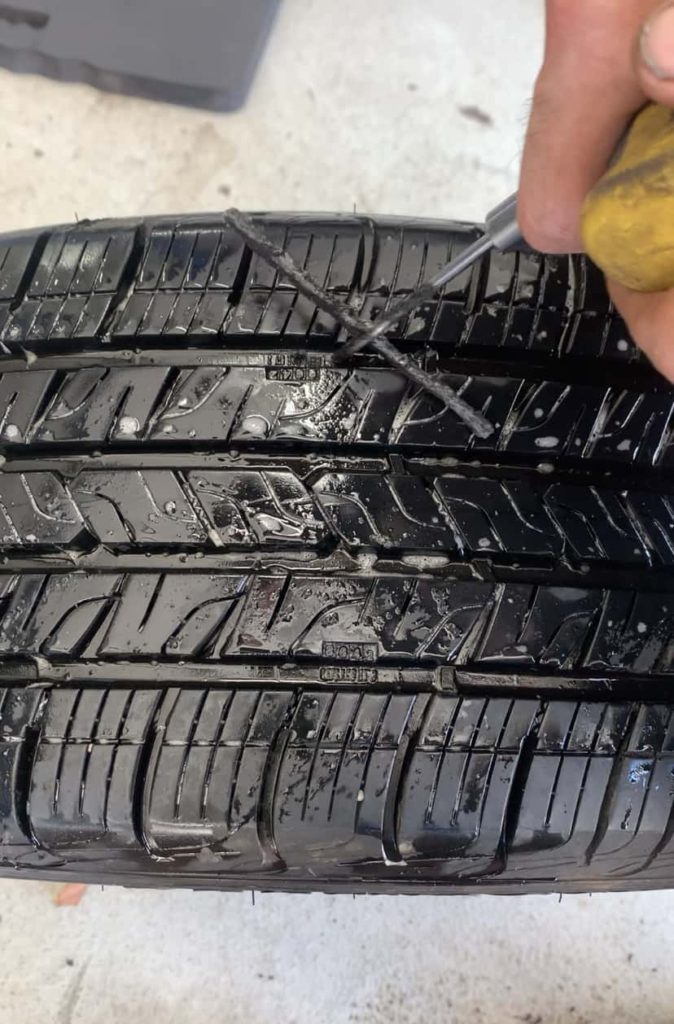What is the Ford Transit Tire Pressure System?
The tire pressure system feature in the Ford Transit is designed to alert the driver about issues with both tire pressure and the monitoring system’s functionality. This system is composed of pressure sensors embedded in each wheel, a receiver unit specifically for TPMS, and a core processing computer, commonly referred to as the ECU.
How Does the Ford Transit TPMS Work?
Tire Pressure Sensors:
Each wheel of the Ford Transit is equipped with a tire pressure sensor. These sensors are attached at the base of the valve stem inside the tire and are battery-powered. They are essentially a small circuit board within a plastic container.
The sensors continuously monitor the air pressure and temperature levels within each tire.
Data Transmission:
The sensors are not just passive monitoring devices; they actively transmit the data they are collecting.
Using wireless technology, the sensors send tire pressure information to the TPMS receiving unit in real-time. Once the Transit starts moving over 20 Mph, the data is transmitted via radio frequency technology.
The Ford Transit uses 315 Mhz and 433 Mhz sensors.
TPMS Receiver Module:
The Ford Transit TPMS Receiver Module acts as the central hub that receives data from all the tire pressure sensors.
Its purpose is being responsible for collating the incoming data, deciphering it, and then forwarding it to the Electronic Control Unit (ECU) for further analysis and action.
Electronic Control Unit (ECU):
The ECU serves as the vehicle and system’s main computer, receiving processed data from the TPMS Receiver Module.
It analyzes the data to determine whether the tire pressure is within safe limits. If any anomalies are detected, the ECU will initiate an alert.
Tire Pressure Warning Lights:
Once the ECU decides that an alert should be triggered, it communicates with the vehicle’s dashboard. When the pressure drops 20% or more below the recommended pressure, the low pressure light is triggered.
The Ford Transit uses the universal low tire pressure warning light (yellow exclamation point) as well as messages on the information display screen such as “Tire Pressure Low”, “Tire Pressure Monitor Fault”, and “Tire Pressure Sensor Fault”. Each message helps in diagnosing what the issue is.
How to Reset the Ford Transit Tire Pressure Light
After tire rotations, tire replacements, or any tire service follow this reset procedure:
Accelerate Beyond 20 mph: Drive the Ford Transit at a speed exceeding 20 mph for at least two minutes.
Switch Off Ignition: Turn the vehicle’s ignition to the OFF position.
Ignition On, Engine Off: Double-click the start button without placing your foot on the brake, or turn the key to its second position, effectively switching the ignition ON but keeping the engine OFF.
Toggle Hazard Lights: Activate and deactivate the hazard lights three times, totaling six presses of the hazard flasher button.
Enter Reset Mode: If steps 1-4 are executed correctly, a single horn beep and an on-screen message will confirm entry into RESET MODE.
Front Left Tire: Exit the Transit and unscrew the valve cap from the driver’s side front tire.
Release Air from Front Left: Depress the valve core to let air out until the horn sounds, indicating the ECU has registered the wheel’s position.
Front Right Tire: Move to the front right tire (passenger side), remove the valve cap, and start releasing air until the horn beeps.
Rear Right Tire: Proceed to the rear right tire (passenger side), remove the valve cap, and commence air release until you hear the horn.
Rear Left Tire: Finally, go to the rear left tire (driver’s side rear), remove the valve cap, and begin releasing air. Stop when the horn sounds.
Training Complete: If you have completed all steps successfully, a message will appear “Training Complete” on the information display.
Turn Off Ignition: Switch the Transit’s ignition back to the OFF position.
Reinflate Tires: Inflate all tires to their recommended pressure levels.
Final Drive: Drive the van for a few minutes, making sure to drive at speeds greater than 20 mph.
Ford Transit TPMS Reset Tips
Should the horn fail to sound following the fifth step, initiate the procedure from the beginning.
It’s crucial to perform the tire pressure reset steps for the Ford Transit ONLY in the sequence detailed above.
In case a double beep is heard after switching off the ignition, go through the entire reset process again.
How to Change the Ford Transit Tire Pressure Units
Use the steering wheel controls and navigate to SETTINGS on the information display by pressing the menu button. (next to the OK button)
Select DISPLAY.
Select TIRE PRESSURE.
Select your desired pressure unit and select OK.
How to View Ford Transit Current Tire Pressures
Drive the Truck at 20 Mph for a few minutes
Using the steering wheel controls select the Gears icon.
Select Vehicle Maintenance
Select Tire Pressure
2023 Ford Transit Tire Pressures
TIRE SIZE | FRONT PSI | REAR PSI |
235/65R16 | 52 | 75 |
What Do the Different Ford Transit Tire Pressure Warning Messages Mean?
"Tire Pressure Low"
This alert signifies that at least one tire is underinflated and should be pumped up to the suggested pressure levels.
"Tire Pressure Monitor Fault"
This notification points to a malfunction or issue in the tire pressure monitoring system itself, causing the yellow exclamation mark tire light to blink.
"Tire Pressure Sensor Fault"
This alert signifies that one or more Ford Transit tire pressure sensors are failing to establish communication with the TPMS receiving unit.
What Can Cause the Ford Transit Low Tire Pressure Light to Turn On?
Tires low on air pressure
Overinflated tires
Tires leaking air
Absent sensor in the wheel (for example, when a spare tire is in use)
Worn-out or malfunctioning TPMS sensor battery
Defective TPMS receiving unit or ECU
Nearby electronic devices or other Ford vehicles causing interference
Changes in weather conditions or elevation
Excessive vehicle load
Use of tire chains
Thick window tints
Ford Transit Tire Pressure Sensor Batteries
Each wheel on a Ford Transit features its own tire pressure sensor, powered by a silver-oxide battery (the Ford Transit spare tire does not include a tire pressure sensor). The sensor contains an electronic circuit board connected directly to the battery and is encased in a plastic shell. Because of the way it’s constructed, you can’t simply replace the battery when it’s low on power; you have to swap out the whole sensor and valve stem. Generally, these tire pressure sensors from Ford last between 5 and 10 years, or up to around 100,000 miles.
Troubleshooting Tire Light Problems in the Ford Transit
If resetting the Ford Transit tire pressure light did not turn off or reset the light, here are 6 possible solutions to help find out what the issue is and how it can be resolved. Keep in mind a lot of diagnosing problems is a process of elimination.
Solution 1: Is a Tire Deflating?
If the tire light on your Ford Transit turns on, the first thing you should do is stop driving and examine the tire. Look over the tire and check the pressures of all the tires to find out which one is low on air. To find out if your Transit tire is leaking follow these steps:
Check the tire pressures of all tires and find the underinflated tire.
Use a tire inflator to add air to the tire.
Drive the Transit for a few minutes over 20 Mph.
Answer: If the tire light turns off after inflating and then driving the van but then turns back on afterward (minutes, hours, or days later), you can confidently conclude that you have a leak in that particular tire or wheel. To find out where exactly on the tire or wheel the air leak is coming from, check out solution 6.
Solution 2: Clearing Ford Transit ECU Diagnostic Trouble Codes (DTC)
The Ford Transit ECU stores and records the information everytime the low tire pressure light turns on as a DTC (diagnostic trouble code). Similar to when your computer freezes and you turn it off and then restart it, you can do the same with a vehicle to delete temporary DTC’s. To “restart” the Ford Transit you need to cut off the power supply to the ECU. To do this, disconnect the negative battery terminal of the main 12 volt battery, (make sure the ignition is off and all electronics are off) wait a few moments and then reconnect the terminal. After power to the Van is back, we recommend taking it for a 30 minute drive at a constant speed of 50 Mph.
Answer: If the tire pressure light does turn off after following this procedure and then turns back on while driving or afterwards, this likely means either one or more tire pressure sensors aren’t working correctly (battery issue) or there is simply a leak in one or more tires or wheels.
Solution 3: Troubleshooting a "Tire Pressure Monitor Fault" or "Tire Pressure Sensor Fault"
If the tire light turns on and you see a message saying “Tire Pressure Sensor Fault” or “Tire Pressure Monitor Fault”, one or more tire pressure sensors are not working properly. To determine which sensor is the problem you can test each sensor individually with a TPMS diagnostic tool.
Connect the TPMS tool to the Ford Transit OBD2 port.
Place the TPMS tool directly in front of the valve stem of the front left wheel and select “test” or “trigger” on the tool.
Wait for the tool to reply and then move onto the next 3 tires.
Answer: After testing each Ford TPMS sensor, the TPMS diagnostic tool will show a report of the status of each tire pressure sensor. If the tool cannot establish a connection with a sensor or reports it having a low or depleted battery, that sensor must be replaced.
Solution 4: "Waking" Up an Inactive Tire Pressure Sensor
Sometimes tire pressure sensors are very stubborn and a kick start to wake up. If you have tired to reset and retrain the Ford Transit TPMS sensors without luck, we suggest trying this method:
Release at least 15-20 Psi from the tire and sensor causing an issue by pressing on the valve stem core gently.
Wait a moment.
Overfill the tire with air by 5 Psi over the Ford recommended tire pressure. (if the tire recommends 52 Psi, fill it to 57 Psi.)
Take the Van for a short drive at speeds over 20 Mph.
After driving, readjust the tire pressure back to the cold recommended values.
Answer: If this method has no effect on the tire pressure light, we suggest completing solution 4 and then following the Ford Transit tire pressure light reset procedure.
Solution 5: The Tire Light Turns on and Then Off On Its Own
The impact cool tires make on pressure is an underestimated phenomenon. Have you ever observed your Ford Van tire light on in the morning or after it has been parked for a long period of time and then turn off as you start driving or as the weather gets warmer? This happens because tires lose air pressure when they are cold and tires are cold when they are either not driven on or from the weather. This is a very common reason for low tire pressure lights to turn on.
Answer: Check and adjust your tires when they are cold. This is the only way to set your tire pressures to the precise pressure that Ford recommends.
Solution 6: How to Find a Tire Leak
If you figured out which tire is leaking air, now it’s time to find out where that tire is leaking from. To do this you will need a spray bottle, soap, water, and a tire inflator.
Inflate the tire to at least 40 Psi.
Mix a good amount of soap and water in the spray bottle and spray the entire tire with the soapy solution.
Examine the tire for bubbles. Bubbles point to where the tire is leaking air from.
Answer: find the bubbles and you’ve found the puncture.
Ford Transit Tire Pressure
How Much Does the Air Temperature Affect the Ford Transit Tire Pressure?
Air temperature plays a significant role in the tire pressure of a Ford Transit, affecting both its performance and safety. For every 10°F drop in temperature, tires can lose about 1-2 psi of air pressure. This phenomenon is particularly crucial in colder climates, during winter, and overnight when temperature fluctuations can be dramatic.
How to Check the Transit Tire Pressure
Quick Walk Around: We suggest before doing anything, take a quick walk around the van and visually inspect each tire.
Locate a Reliable Tire Gauge: We recommend using a digital tire pressure gauge because they are accurate and easy to read.
Turn Off the Engine: Ensure your Ford Transit is parked safely on level ground.
Wait for Cool Tires: For an accurate reading, wait until the tires have cooled down if you’ve recently been driving.
Unscrew Valve Cap: Take off the cap from the tire’s valve stem and keep it somewhere safe.
Measure Pressure: Press the digital tire pressure gauge onto the valve stem and take a reading.
Compare to Recommended Levels: Compare your current readings to the Ford Transit recommended pressures.
Adjust Pressure: If needed, use an air compressor to inflate or release air to adjust the tire pressure. Set the pressures to the exact right values.
Replace Valve Cap: Don’t forget to put the valve caps back on. They prevent dirt from getting into the valve stem.
Repeat: Perform the same steps for all four tires.
Common Tire Pressure Questions
Is it Safe to Drive the Ford Transit With the Low Pressure Tire Light On?
The moment the low tire pressure warning light activates, cease driving and investigate the issue. Take a look at the tire and measure its air pressure. Continuing to drive with the warning light on can be risky; to understand the extent of the risk, you need to identify the reason behind the activated TPMS light.
Why is the Tire Light Flashing?
When the tire pressure light on your Ford Transit starts to flash, it typically signifies that one or more tire pressure sensors are failing to communicate with the vehicle’s ECU or TPMS receiver unit. This is referred to as a TPMS malfunction indicator. Such issues often arise either when a sensor’s battery is low or dead, or when one or more wheels lack a tire pressure sensor—like the Ford Transit’s spare tire, which is not equipped with a sensor. The warning light will flash and then remain on each time you operate the Van until the problem is resolved.
Are Tire Plugs Reliable for Fixing Punctured Tires?
Indeed, tire plugs are highly dependable for repairing punctured tires, and I have confidence in them for most scenarios. However, they should not be used if the tire tread is excessively worn or on the tire’s sidewall.
Do Tire Sealants Damage Tire Pressure Sensors?
Using tire sealants could harm the tire pressure sensors and also lead to an imbalance in the tire. We recommend employing them only as a final option!
Everything in this article is applicable to all Ford Transit models and versions including the Ford Transit Connect, Ford E-Transit, Ford Transit XL, Passenger Wagon, Titanium Passenger Wagon, Cargo Van, Cutaway, Chassis Cab, and Passenger Van XL.
Please note that this blog post contains Amazon affiliate links. This means that if you make a purchase through one of these links, we at TPMSRESET.COM may earn a small commission at no extra cost to you. We only recommend products that we personally use and believe in. Thank you for supporting us.

